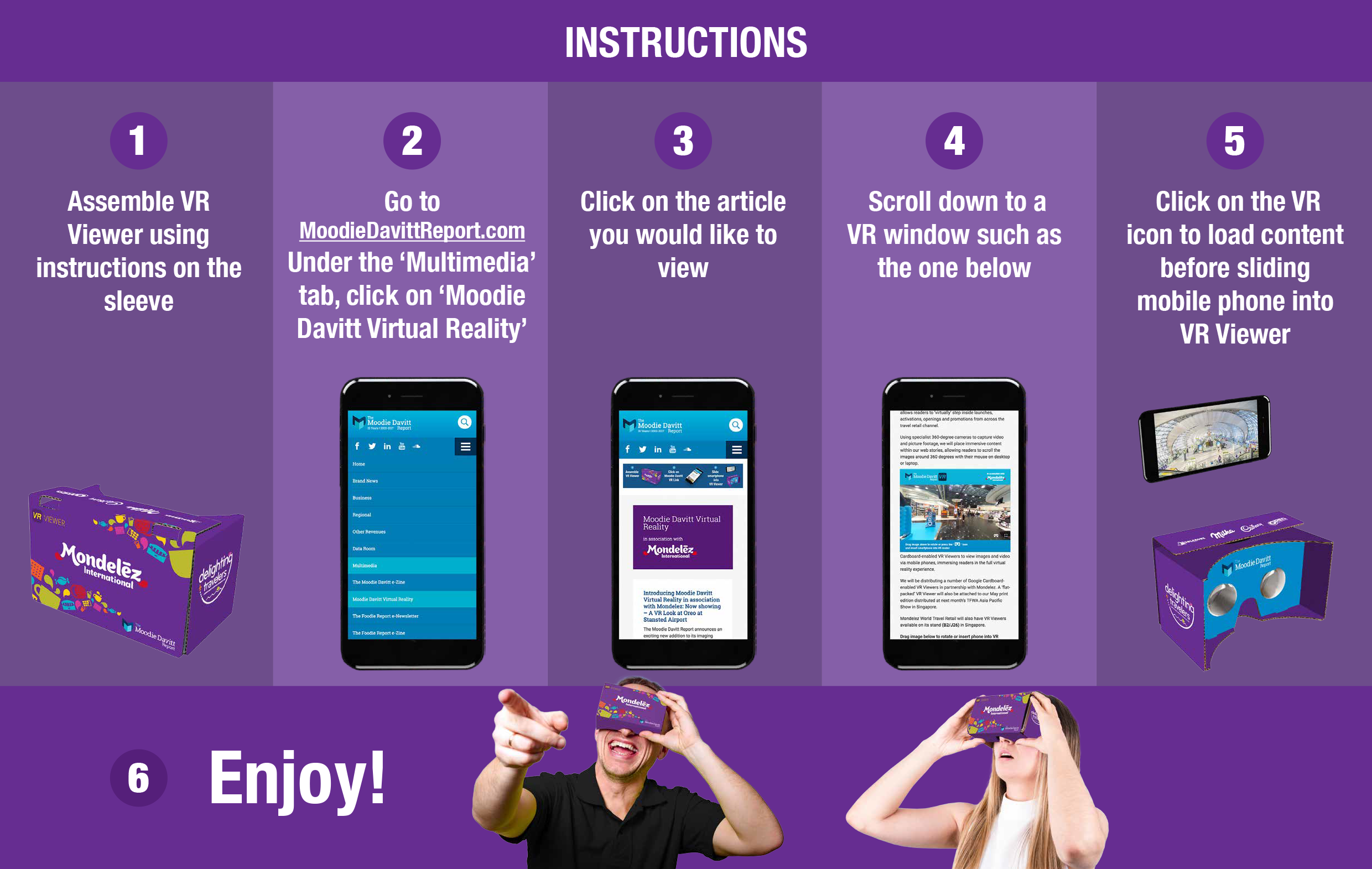INTERNATIONAL. JCDecaux Airport is tapping into the potential of virtual reality (VR) and 360 degree imagery as it seeks a competitive advantage in the world of advertising. That’s according to Marketing Director Steve Cox, who says the out-of-home media group has been one of the first to recognise the potential industry benefits that these new technologies bring to the business landscape. JCDecaux Airport is using VR to bring its customers a fresh overview of its advertising assets.
[Note: The Moodie Davitt Report recently partnered with Mondelez World Travel Retail for the launch of an exciting new addition to its multimedia portfolio – Moodie Davitt Virtual Reality.]
“JCDecaux is a business built on innovative customer-focused solutions, so it’s appropriate for us to be an early adopter of this kind of genuinely useful technology” – Steve Cox, JCDecaux Airport
In one of JCDecaux Airport’s recent executions advertising clients were taken on a virtual reality journey through the entire passenger experience at London Heathrow Airport.
In a first of its kind for the out-of-home advertising industry, the company tasked virtual reality specialists Visualise with creating four 360-degree “immersive and informative” VR video experiences to showcase advertising possibilities at the airport, as an alternative to a physical tour.
Moodie Davitt Virtual Reality presents the four iExplore 360 degree VR videos featuring JCDecaux Airport’s Heathrow advertising assets.
For the full immersive experience navigate to this page on your phone and open one of the JCDecaux videos on YouTube itself, click on the Google Cardboard symbol and then place your phone into a virtual reality viewer to see the ‘fly-through’ in stereoscopic 3D.


“The response from customers to the VR innovation has been excellent, partly because they value the content, but also because VR is currently a hot topic in its own right, so they’re keen to experience it first hand,” said JCDecaux Airport Marketing Director Steve Cox.
“Our objective was to bring the airport experience to the individual rather than the other way around. The best way to sell the value of advertising in the unique airport space is to take people there to experience it for real. Many advertisers and media agencies can’t spare the time, so this is the next best thing,” Cox added.
Hosted on an app built by Visualise, the ‘iExplore’ content was made available via Samsung Gear VR headsets and JCDecaux’s YouTube page. Binaural audio was used to direct viewer attention across the breadth of the location and dynamic voice-over responded to the direction the viewer was looking in, according to Visualise.


The VR experience took users through the check-in, departures and arrivals areas, with each advertising location designed to cater to the different passenger mindsets at different points of the airport journey.
iExplore was shot using robotic and remote camera systems to give the viewer the sense of travelling through the environment and includes a 360-degree time-lapse in order to show the flow of footfall through the space.


With a number of further VR projects in the pipeline JCDecaux is keen to build upon what it sees as a groundswell in popular uptake of the technology; “We’re looking to produce another “immersive ‘fly-through’ this year, but this one will be a little more ‘emotive’,” said Cox
“The current experience is designed to bring to life the more rational benefits of airport advertising. The next project will aim to showcase just how special and inspirational the airport space is, and will be designed particularly with creative agencies in mind”.


JCDecaux foresees an important role for VR in its business strategy in the future, as the growth of experiential media plays a part in fulfilling consumer demand for direct brand and retail interaction.
“As long as technology serves a useful purpose then there’s always a value in being an early adopter,” Cox added.
“JCDecaux is a business built on innovative customer-focused solutions, so it’s appropriate for us to be an early adopter of this kind of genuinely useful technology.
“We’ll certainly be looking to use VR to bring to life the unique benefits of airport advertising in the comfort of advertisers’ own homes. Plus I think more advertisers will be looking to use VR technology on their experiential stands – if ‘experiential’ is all about the ‘experience’ then surely this is a great opportunity to make that experience as real as possible,” Cox concluded.
*NOTE ON MOODIE DAVITT VR
All virtual reality images and video presented on The Moodie Davitt Report will be viewable on VR-enabled devices including: Google Cardboard, Google Daydream, Samsung Gear VR, HTC Hive, LG 360VR and Huawei VR and PlayStation VR – as long as the device has the capability to browse The Moodie Davitt Report website.
Google Cardboard VR works with most modern Android phones. Phones need to be running Android 4.1 (Jelly Bean) or above. Ideally they should support NFC too. Cardboard will also work with iPhone 6 and above.






